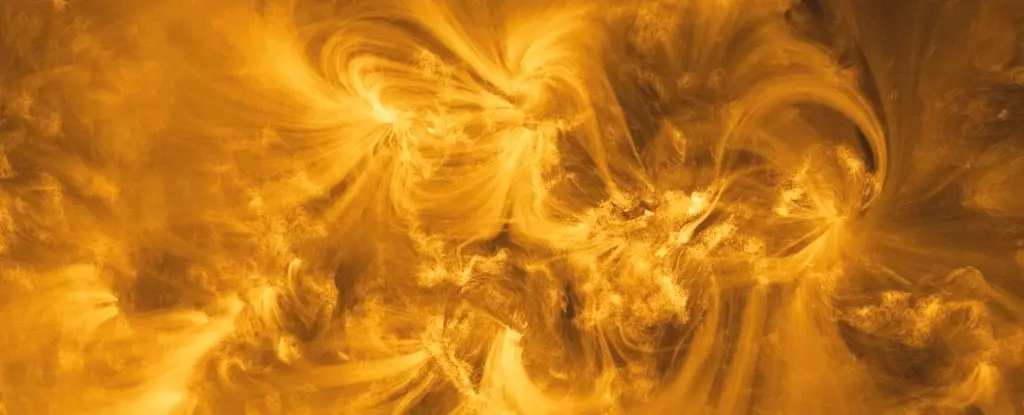In the vast expanse of space, 74 million kilometers is but a modest stretch when we refer to the distance from Earth to the Sun. Yet, this remarkable journey achieved by the ESA/NASA Solar Orbiter signifies more than just miles traversed; it embodies a pioneering quest to understand the celestial powerhouse that fuels our solar system. Launched in 2020, the Solar Orbiter’s mission is intricately woven into the fabric of solar research, focusing on unraveling mysteries surrounding solar phenomena, including the enigmatic solar wind, magnetic intricacies, and explosive events like solar flares and coronal mass ejections.
One of the core aspirations of the Solar Orbiter is to enhance our understanding of the Sun’s structure and dynamics through high-resolution imaging. By incorporating advanced instruments that monitor different wavelengths of electromagnetic radiation, this spacecraft is equipped to dissect and analyze the Sun’s multifaceted nature. The recent release of stunning images, resulting from data gathered in March 2023, illustrates how this mission is not just about observing; it’s about connecting the dots in the solar puzzle.
The Solar Orbiter is outfitted with an impressive suite of imaging capabilities, including the Polarimetric and Helioseismic Imager (PHI) and the Extreme Ultraviolet Imager (EUI). These instruments have not only captured breathtaking images but have also produced some of the highest-resolution visuals of the Sun to date. Each image presented by the European Space Agency is precisely a composite of 25 individual captures taken on the same day, showcasing a detailed look at the Sun’s surface and its magnetic field.
These images offer diverse perspectives on the Sun: visible light images reveal sunspots and prominences, magnetic images expose the intricate field lines shaping solar activity, plasma images depict the movements of charged particles, and ultraviolet images provide a vibrant view of solar activity above the photosphere. This multifaceted approach allows researchers to peel back the layers of solar activity and understand complex interactions between various solar phenomena.
The magnetic field of the Sun plays a pivotal role in solar dynamics, acting as the underlying force shaping its activity from the tiniest features to colossal eruptions. Project Scientist Daniel Müller emphasizes the importance of mapping and analyzing the Sun’s magnetic field to grasp its dynamic behavior fully. The findings from the Solar Orbiter represent not merely academic investigations but serve as essential insights into the forces driving solar phenomena, thus fostering an understanding of how these dynamics affect space weather and, by extension, our planet.
The data harvested from the PHI instrument offers a visual map indicating the movement of plasma across the Sun’s surface, with blue regions indicating plasma moving towards the Orbiter and red areas suggesting movement away. Such detailed observations are crucial for generating predictions related to solar storms, which can have profound impacts on satellite operations, communications, and even power grids on Earth.
Beyond the scientific implications, the images offered by the Solar Orbiter instigate a sense of awe. The ultraviolet images, in particular, are striking, depicting the vibrant currents of superheated plasma extending from sunspots. Their ethereal beauty invites viewers to ponder more profound questions about the universe itself—the nature of existence, the life cycle of celestial bodies, and humanity’s place within the cosmos.
The Solar Orbiter’s contributions extend far beyond its immediate scientific goals. It serves as a reminder of our place in the universe and the intricate connections that bind us to this powerful star. As we gaze upon these high-resolution images, we are not just observing the Sun; we are bearing witness to a magnificent cosmic dance of energy and matter that has evolved over billions of years.
The Solar Orbiter exemplifies the cutting edge of solar research and exploration. As it continues its journey, the insights it provides will deepen our understanding of the Sun, ensuring that we remain vigilant and informed about the celestial forces that shape our lives. As we contemplate the implications of this groundbreaking mission, we are left with a sense of wonder about the vast universe that surrounds us and our shared connection to its mysteries.


Leave a Reply